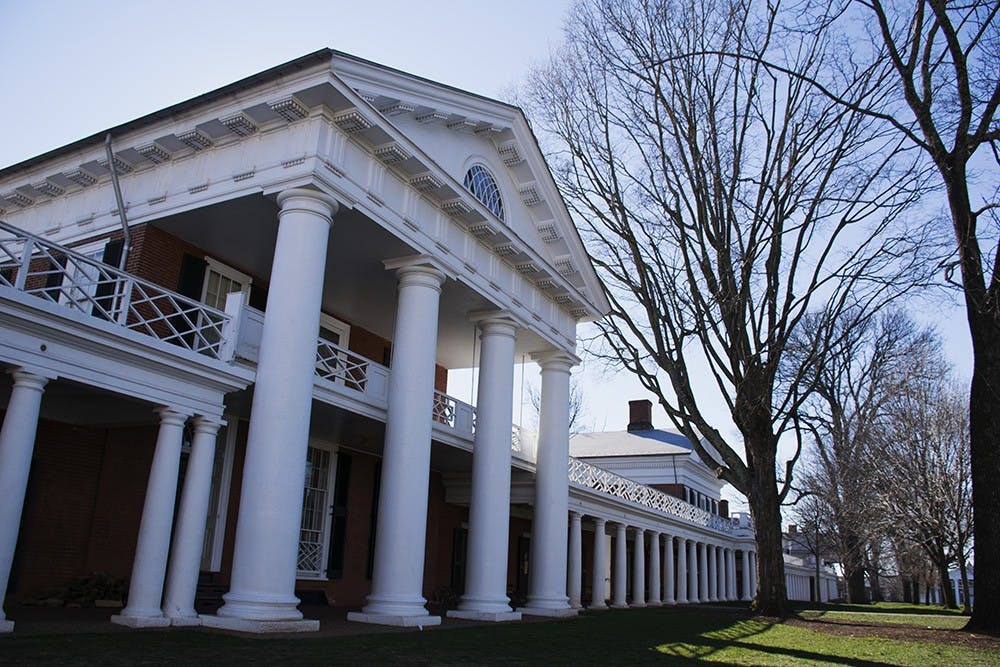Last week, the University hosted the Cornerstone Summer Institute — a new student-led program for high school students which explores slavery and contemporary racial disparities through its connection to Thomas Jefferson and central Virginia.
Participating students visited Monticello, Montpelier, the Jefferson School African American Heritage Center and the University in order to learn about slavery in antebellum Virginia.
Assistant Dean and Associate Prof. Kirt von Daacke — who specializes in early American history — led the program, which was largely developed by Batten graduate student Alison Jawetz.
von Daacke said he hopes the glimpse into the racial history of Charlottesville and the surrounding area will provide students with a deeper understanding of modern issues.
“You cannot understand the more recent past — Jim Crow, segregation, white supremacist movements, even to the present day in terms of modern inequality, without understanding this history,” von Daacke said. “That’s not to say that slavery explains modern inequality, but they’re linked in very important ways.”
Curry Prof. Joanna Williams, who was involved in training counselors for the Institute, said this focus on current issues was at the core of Jawetz's vision.
"I loved that this wasn’t history camp, it wasn’t just about learning academic information," Williams said. "It was really like picking up a critical perspective and bringing it into present-day tough intractable issues."
At Monticello, students took a guided tour of the estate, which focused on the history of the Hemmings family.
More than 80 members of the Hemmings family were enslaved at Jefferson’s home during his lifetime. Sally Hemmings, one female slave, is widely believed to have had several children by Jefferson.
Brandon Dillard, a staff member in Monticello’s Education and Visitor Programs Department, said he hopes students leave with an appreciation of the nature of historical inquiry.
“History itself is not a static idea but something that is about looking at different times through different lenses and asking questions,” Dillard said. “I’d say the students that came brought their questions, and those questions were exceptionally insightful.”
Montpelier, James Madison’s estate in Orange County, was the site of a hands-on archeological exercise for the students.
The visit to Montpelier also provided students with a look at the Gilmore cabin — a home near the property which was purchased by an emancipated slave in the 1860s.
At the University, students took a tour of Grounds and visited the Albert and Shirley Small Special Collections Library to examine archival documents.
“The three pillars of the program are archival study, archaeology — because archaeology is deeply important to understanding the past — and community engagement,” von Daacke said.
The Institute came about, according to von Daacke, as a result of community interest in expanding knowledge of the local history of slavery, as well as through the efforts of Jawetz, who was inspired by a class taught by University Profs. Frank Dukes and Phyllis Leffler.
Students learned that the everyday reality of slavery was reflected even in the architecture of the University, von Daacke said.
“We know there were walls between the ranges and the pavilions that were about eight feet tall,” von Daacke said. “They were intended to mask sound and conceal the facts of slavery. Most of those gardens were workyards. Where the cars park now behind the pavilions, that was all walled off. It would have been loud; slaves would have been butchering hogs, doing laundry, smoking meat.”
The history of slavery in Virginia and at the University is a crucial part of America’s past which shouldn’t be overlooked, von Daacke said.
“This is an opportunity to look at the buildings again, look at the spaces again, look at the materials and learn,” von Daacke said. “So telling these unpleasant truths and stories about U.Va., about Charlottesville, about Albemarle’s and America’s past is not about bashing them. It’s about saying, we can use them as an opportunity to learn and grow, and this is exactly what Jefferson would have wanted. Even if he couldn’t have imagined us having women and nonwhite students coming here and talking about slavery.”
This is the first year the Institute was implemented.
von Daacke said he hopes to spread the word to a greater number of high school students and guidance counselors next year.
“Some of these kids are gonna come back and go to U.Va., and when they get here they're going to know the story,” von Daacke said.
Update: This article previously misidentified "Alison Jawetz" as a Batten alumna — she is a College alumna currently attending the Batten School of Leadership and Public Policy.







